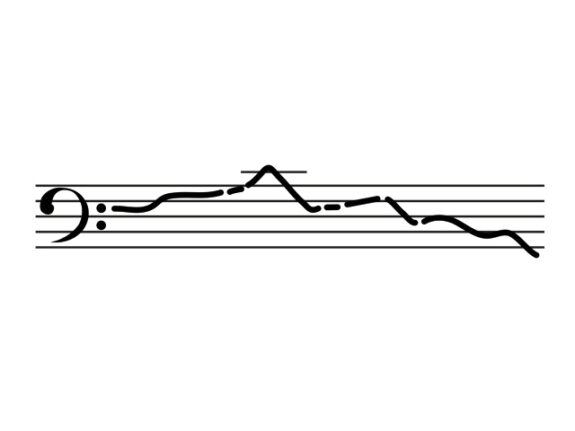
Intonation
A sing-song voice
Intonation is usually what people are talking about when they say that someone else has a ‘sing song’ voice.
In all varieties of English, intonation or tone is used to express all sorts of nuance.
Although the notion of intonation seems clear enough, there is no agreement about what is being manipulated, and how. For instance, are there a number of levels, like notes in music, with speakers gliding from one to the next with no clear boundaries in between? Or is there just a movement, what musicians call ‘glissando’, in a way that is impossible on a keyboard instrument like a piano, very difficult on a clarinet, but natural on a trombone or Swanee whistle?
It was the first full-time clinical linguist, John Thelwall, who was the first to discuss those aspects of speech which involve volume and pitch, including intonation and word stress. He used the musical term ‘cadences’ to describe the units of variation.
In English intonation is used to differentiate questions from statements, to mark all sorts of ‘doing’ effects, to emphasise and a whole lot more.
Tone
In a separate way, in about half the languages of the world, that is to say most of the languages of sub-Saharan Africa and East Asia and many of the original languages of North and South America, words have distinct tones from an inventory of between two and eight. A tone is a particular narrowly defined pattern of intonation. consisting of a rise, a fall, a rise and fall, and so on. In these languages, tone is used to distinguish words and sometimes parts of words.
English, and most of the languages of Western Europe, don’t use tones.
Intonation or tone
One of the first things which the learner of a language like English has to do is to work out that the intonations in his or her target language do not involve tones on the individual words. Most children work this out very early. But for some children this appears to be much less evident. Because there is intonation in every sentence it is possible for the learner to make a mistake on this. If the learner does make a mistake of this sort, it will be almost impossible to identify which word is which. Each word will appear to vary from one token to the next. And language just won’t develop at all. This is rare, but it seems to happen occasionally.

